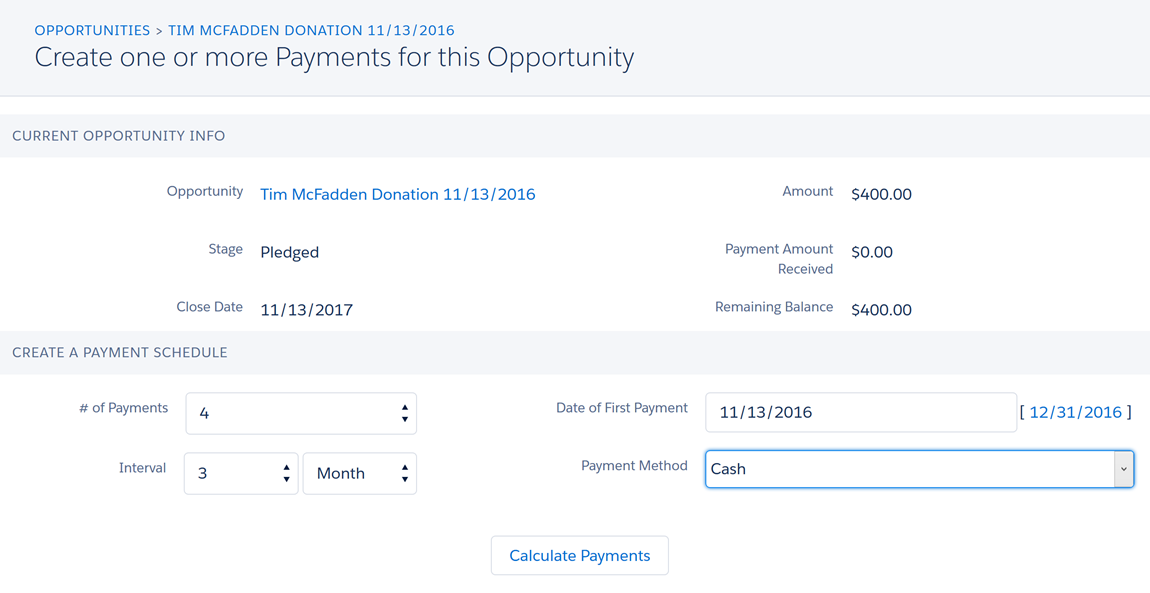
Image source: https://res.cloudinary.com/hy4kyit2a/image/upload/doc/trailhead/en-us8731aaa4030740ee6ad1d5222979503d.png
Benevolence, good will and philanthropy are honorable principles to adhere to and run by, but when bills start amassing, a nonprofit or charitable organization will not be excused from payment despite its inherent noble ideals and objectives. To make certain that all expenses will be paid - to ensure that its programs and services will remain in operation indefinitely - any nonprofit and/or charitable group must raise revenues on a consistent basis. Indeed, fundraising is so important that organizations often contract with professional fundraising firms to best determine how to continuously fill their coffers.
In Post-September 11th America, the task of obtaining financial support has grown increasingly more difficult. As our economy remains in flux - as so many of our citizens continue to experience personal money woes - the act of providing largesse itself becomes jeopardized.
Moreover, when tragedy strikes (e.g., act of terrorism on 9/11, Hurricane Katrina, etc.), so much of the charity shifts to "ground zero organizations" or others providing direct relief; other nonprofits and charities are affected and receive less support. Resources have never been equitably distributed, and it behooves any agency to set itself apart as perhaps the "most worthy" - at least the charity of choice in a donor's mind. (It is a sad reality that organizations relying on public donations do compete with one another for scarce resources.)
Consequently, nonprofit and charitable organizations need to be business-savvy to maximize funds. Marketing must be pursued to increase income as prospective donors may learn of the group through a variety of sources: media, telemarketing, special events, and direct mail may be coordinated and utilized to "spread the word." From these efforts, people pledge and give financial assistance, building a donor base.
However, it is interesting to note that most donors give a one-time payment and that usually represents a lifetime contribution. Some organizations do not even call donors back at a later juncture to ask for more money, eliminating good prospects and additional revenue. Indeed, it is imperative for an organization to establish regular dialogue with former donors. However, what is not apparent and regularly practiced is to design a pledge program where individuals may contribute on a consistent basis (e.g., every month).
Regular donations may be received with a preauthorized payment as individuals authorize the organization to deduct money from their bank accounts at certain time intervals. For example, an individual can specify that he/she wants to give $100 every month, to be deducted automatically. The funds will be transferred from the donor's account to the organization's account, typically via an electronic fund transfer. In the aforementioned example, the organization will have collected $1,200 at the end of the year.
The monthly pledge program (the time frame can be altered) offers a multitude of advantages. The following list gives eight great reasons why a nonprofit and/or charity should implement it as soon as possible:
1. Explosive income potential - Simply ask and you may receive. Donors may very well contribute if a direct request is made. Instead of only receiving a one-time payment, an organization may, for example, receive 12 payments per year. Moreover, donors are likely to give more if their total donation can be subdivided over the course of the year.
2. Convenience - New donors are attracted by the ease of making donations. They do not have to sign and forward a check but just merely provide authorization for automatic deductions.
3. Better rapport - The connection between the organization and donor grows closer over time. Donors feel that they have an even more "personal stake" in the organization's welfare, and are more apt to volunteer time to participate in special events and other fundraising activities.
4. Increases retention rate - Donors are more likely to stay with the program. Long-term value studies reveal that those on preauthorized payments will be contributing to the organization long-term, many until their death. One person contributing $100/month for twenty years can result in $24,000 for the nonprofit and/or charitable group!
5. Reliable source of revenue - The organization is guaranteed income every month, which can cover a variety of monthly expenses (e.g., electric bills, telephone costs, etc.). The agency can budget its cash flow accordingly.
6. Savings - Administrative costs are dramatically reduced as there is much less paperwork. One person in the agency can easily oversee and manage a recurring payment plan.
7. Claiming Share of Resources - An organization that wishes to stake its claim to limited resources and financial reserves must make certain that individuals join its preauthorized payments plan, rather than one for a competitor. If donors participate in another agency's recurring payment plan, they may not be willing or able to join your program's plan.
8. Simplicity - It is very easy to establish a preauthorized plan arrangement. A donor fills out a simple form stipulating that he/she authorizes a transfer of money to an organization on a monthly basis. An electronic fund transfer then takes place with the assistance of a payment processing company.
In light of the numerous advantages of a recurring payment plan, the operative question does not center on whether a nonprofit or charity should adopt it, but "Why have they not done so thus far?" Any organization that is in the business of fundraising (which applies to all nonprofit and charitable groups) must avail itself to preauthorized payments and pledge to do so with expedience!
Copyright 2006 William Hamilton
